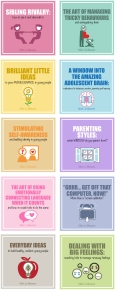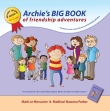Teaching Tough Kids
Chapter 1
What is our job? To accept we are potent agents of change
Your Personal Checklist, take the challenge and reflect
- Do you offer relationship and engagement to students?
- Between teacher and child: what sort of emotion do you radiate?
- Do you look after yourself?
- Do you remind students they can change and get smarter?
- How conditioned are you by your in heritance?
- The Relational Window: How do you control?
- Living in the TO quadrant, being punitive
- Living in the NOT quadrant, being neglectful
- Living in the FOR quadrant, being permissive
- Living in the WITH quadrant, being restorative
- What is our core work?
- Do you promote what you do to parents?
- Do you offer steady support to families?
As educators, we have the capacity to influence transformation within students. We can fill them with inspiration, dread, dreams, confidence or deep feelings of failure or resentment, and history tells us we are very good at it. Whether we know it or not, the mark we leave on every student who comes our way is absolutely enabling or disabling to them.
The results from Dr. Pamela Snow's recent Australian studies remind us of something many educatorsmight predict, and wish for. Snow emphasises the dynamic influence educators have on the young people they interact with. She encourages teachers to think of themselves as public health professionals - holding each generation's future emotional, economic, mental and physical well being in their hands. (Snow & Powell, 2008; Snow, 2008). Snow's research strongly suggests that the longer educators engage students in learning, the longer teachers can sustain vibrant emotional connections with students and the longer students remain at school with a willingness to learn the healthier and wealthier their life expectancy will be. Similarly, New Zealand researcher John Hattie tells us that 'teachers make the difference' (Hattie, 2009). He says we have little control over what kids bring to us at school because 50% of their variance in achievement is contributed to by genetics, personality and background. Our role is to teach them all, whether they happen to be large or small, eager or reluctant, fast or slow, red or blue, compliant or otherwise. The next largest variance in achievement for students is associated to the potent influence teachers have on them. Teacher influence accounts for about 30%. Hattie believes it is what teachers know, what they say, what they do and how they show they care. They have a big impact on the climate of a school and the perception the community holds of a school. Teachers are powerful.
The young learners who are at the heart of this book are reliant on teachers who continually question and adjust what they think, say and do with kids in classes, in both the good and bad moments. Options to build the emotion, behaviour and learning of these kids require hard work, persistence, flexibility and faith. Rarely is there a silver bullet, and believing it is possible to measure some of the fabulous transformations seen within students in the same way literacy and numeracy levels are scored misses the spirit and depth of an educator's work and influence. These students are dependent on our clever abilities to place an emotional lens on our work while delivering quality curriculum (Thornton, 2008). The best any of us have to offer is a willingness to connect with students through a quality emotional lens. It is the only thing that will ever go close to providing any sort of inclusion that is remotely authentic.
So before leaping into grand plans to encourage any student to lift their organisation, care, motivation, mood or responsibility let's review what we have to offer; the depth of our personal resources and our understandings. A periodic stock take helps us to resist the temptation to blame students for their poor functioning or under performance. Without this awareness, the constructive influences we may be able to generate are likely to be erratic at best ...
Plus single $20 postage and handling fee












